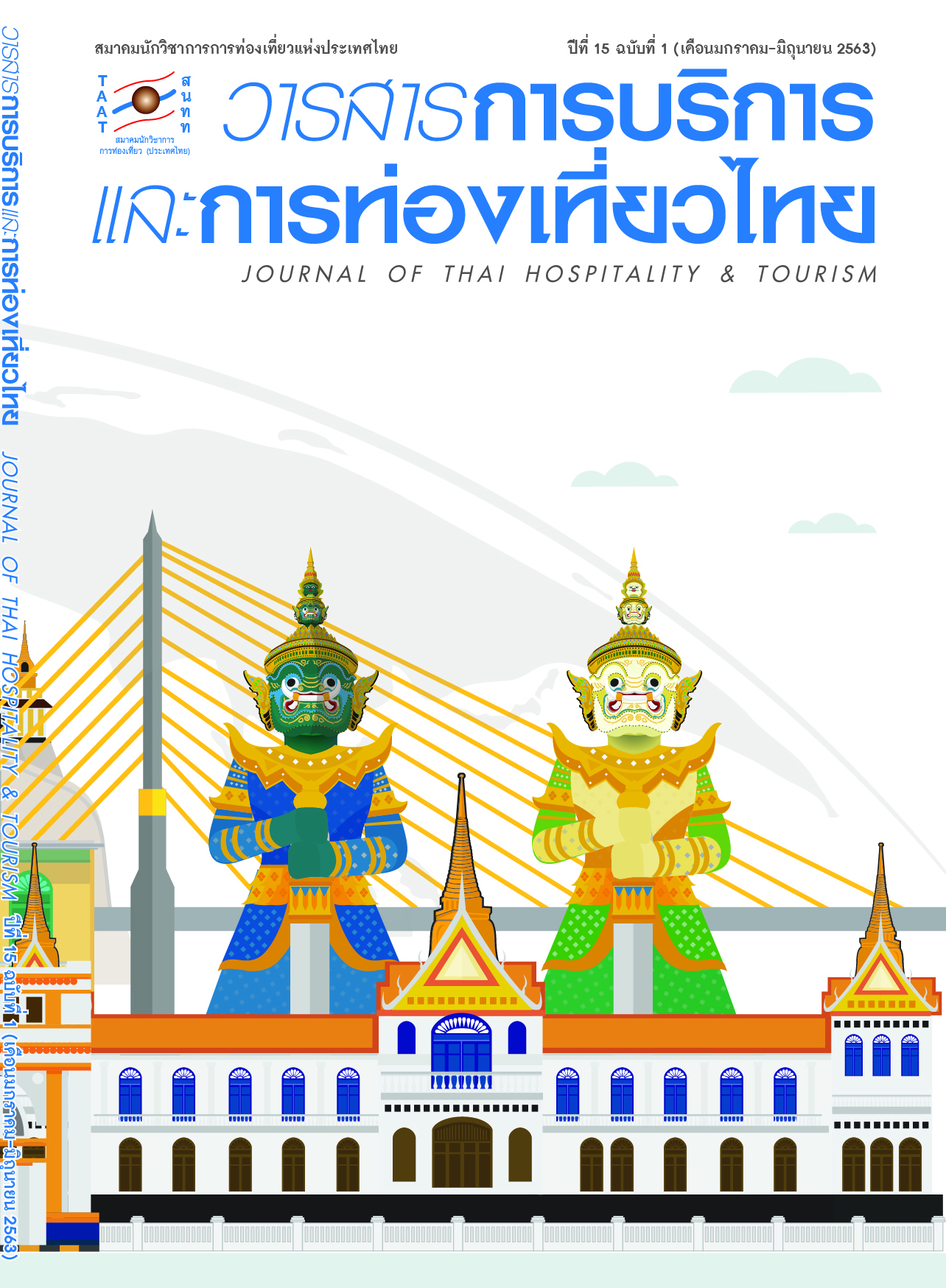The Potential of Creative Tourist Destination in Satun Province
Main Article Content
Abstract
The purpose of this study focused on investigating the potentialities of creative tourist destinations in Satun Province. For research methodology, a constructed assessment checklist based on the conceptualization of creative tourist destinations were all approved by one tourism expert, one historical or cultural tourism expert, and a tourism entrepreneur.
The results of this study revealed that the potentialities of community-based tourism were mostly observed in terms of their participatory community-based tourism activities, and followed by tourists’ idea-sharing, outdoor tourism activity practices and academic fulfillments, and tourists’ accommodation and homestay services. On the other hand, the low potentialities of natural tourist destinations were mostly observed, depending on maintained tourist destinations, which were likely to be historical, religious, and cultural tourist destinations. Also, both no maintenance services and no participatory tourist activities were mostly observed in terms of the low potentialities of archeological tourist destinations. In order to advance networking databases on creative tourist destinations in Satun Province, the feasibility of creative tourist destinations’ potentialities should be engaged with both moderate and higher-level potentialities of creative tourist destinations in Satun Province.
Article Details
References
Creative Academy for Cultural and Heritage Tourism. (2014). Creative Tourism. Bangkok: Tourism Authority of Thailand.
Goeldner, C. R. & Ritchies, B. J. (2006). Tourism: Principles, Practices and Philosophies. New Jersey: John Wiley & Sons.
Immigration Bureau. (2016). The Statistic of People Passing the City in Satun Border. Retrieved August 20, 2016, from https://www.immigration.go.th/nov2004/base.php.
Korez–vide, R. (2013). Promoting Sustainability of Tourism by Creative Tourism Development: How Far is Slovenia?. Innovative Issues and Approaches in Social Sciences, 6(1), 177–197.
Narong Kongjam. (2014). The Success of the Implementing Creative Initiative in 2014. Lesson Learned.
Nikom Jarumanee. (2001). Tourism and Tourism Industry Management. Bangkok: OS Printing House Press.
Phattarapong Indrakamnerd et al. (2010). The Innovative Systems for the Developing A Knowledge–Based and Creative Economy: A Case Study of Creative Tourism. Bangkok: Research Report. Office of the Education Council.
Ranee Esichaikul. (2014). Niche Tourism Management. Nonthaburi: Sukhothai Thammathirat Open University Press.
Richards, G. (2010). Creative Tourism and Local Development. In Wurzburger, R. (ed.). Creative Tourism A Globle Conversation How to Provide Unique Creative Experiences for Travelers Worldwide (pp.78–90). At Present at the 2008 Santa Fe & UNESCO International Conference on Creative Tourism in Santa Fe, New Mexico: USA.
Thanakrit Phattharathorn. (2013). Creative Tourism Thailand. Bangkok: Designated Areas for Sustainable Tourism.
Thanakrit Sangchoey. (2007). Tourism and Hospitality Industry. Faculty of Management Science, Silpakorn University.
The Invested Promotion Project on Creative Tourism in Business. (2013). The Creative Tourism Overview. Bangkok: Ministry of Tourism & Sports.


